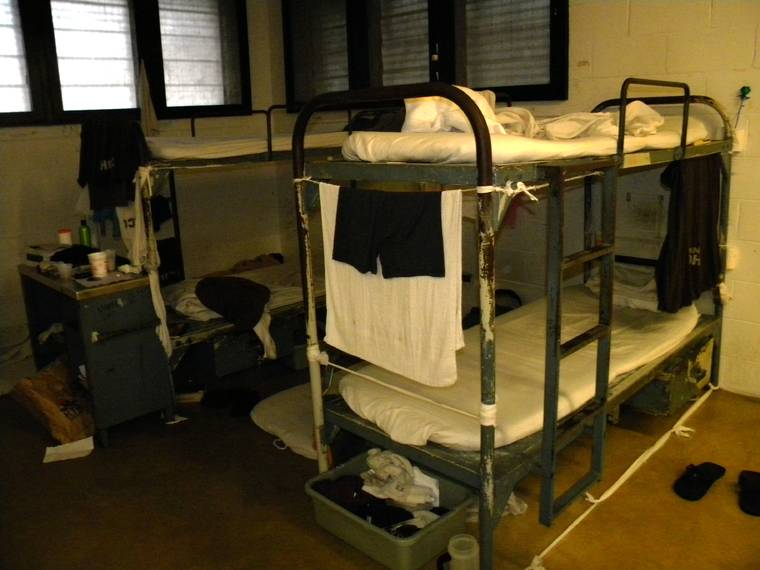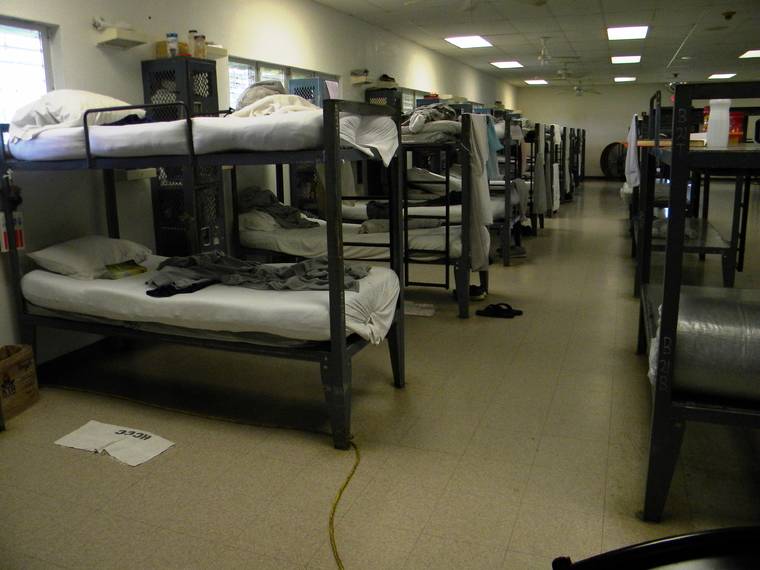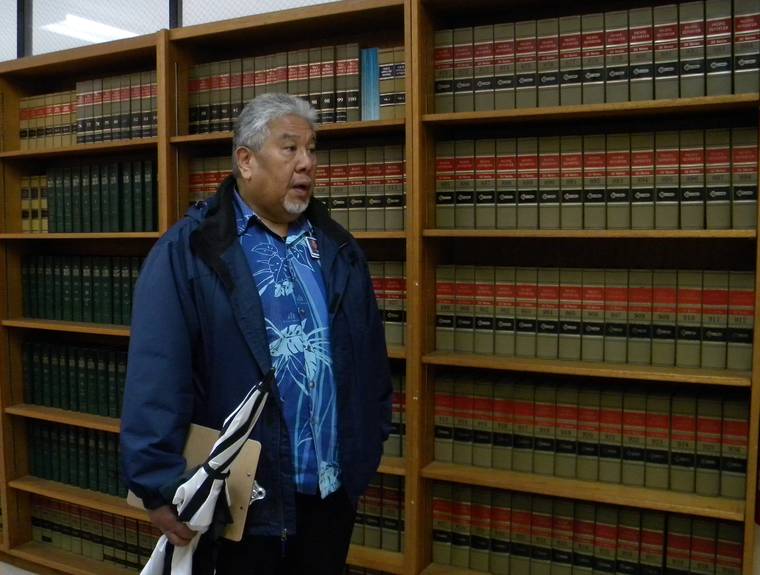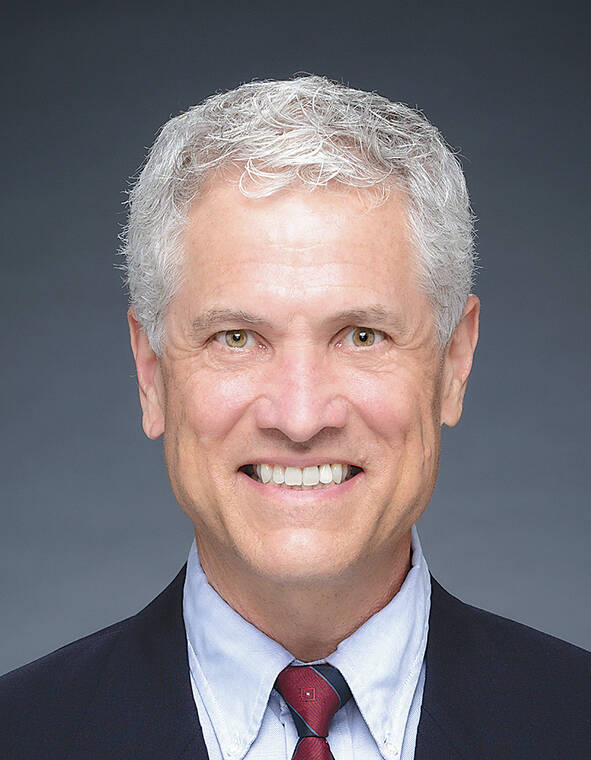When Hawaii Community Correctional Center Warden Peter Cabreros started the job in 1975, he had one inmate.
Nowadays, there are considerably more.
Designed to hold 226 inmates, the Big Island’s only jail, which has two campuses in Hilo, had an Oct. 22 population of 420. It’s the most crowded correctional center in the state, but relief is expected to come soon with the construction of a new medium-security building at the corner of Wainuenue Avenue and Komohana Street.
Cabreros, who looks toward his retirement at the end of the year, is philosophical about the strain of having almost twice the jail population as intended. Between those entering and leaving, the jail processes some 5,000 inmates a year, he said.
“We do the best we can with what we’ve got,” Cabreros said. “The daily challenge is security and safety and managing the population.”
The Legislature appropriated $12.8 million for the new facility. It features an innovative design, more like a college dorm than the prisons of “Cool Hand Luke” fame. There’s a big lounge area and a little garden and outdoor recreation areas, Cabreros said.
“Trying to design facilities that don’t look like jails,” he said. “It’s a new concept.”
Construction of the new unit is still a year or so away, but an environmental assessment finding no significant environmental impact was completed and the old unused jail building was demolished to make room.
The EA anticipated a facility capable of housing up to 144 inmates, but current plans are limited by funding. The first phase will contain 48 beds in two-bed cells, and an optional expansion would add a 32-bed module.
Meanwhile, 7-foot-by-10-foot cells meant to house two inmates usually house three, with one sleeping on a mat on the floor. Program areas such as the 40-foot-by-40-foot enclosure behind smoked glass — dubbed “the fishbowl” — house overflow inmates who also sleep on mats.
It’s dark and dingy at the main jail, which houses men and a few women awaiting trial or sentenced to less than a year. Women are kept segregated, and the announcement, “male staff on the floor” or “female staff on the floor,” is made upon entering areas inhabited by the opposite sex.
It’s not just incarceration. Rehabilitation is on the menu, too. There’s a law library and a lending library, where inmates can ask for titles to take back to their cells. There are computer terminals connected to online educational programs and high school equivalency classes. There’s a librarian and an educational specialist to guide the way.
“We make sure they can only go to the classes they’re allowed to and can’t go surfing,” said Educational Specialist Michael Gebers about the safeguards on the computers.
Seven miles away, the Hale Nani annex is where short-timers are housed as they are reintegrated into society. At the ends of their sentences, some of the inmates are on work furlough and provided bicycles to pedal to their jobs. Others are serving interrupted sentences, where they serve their time on weekends, for example.
It’s still a jail, but it has a more relaxed feel, with two separate buildings, one for females, one for males. Large dormitory-style rooms house dozens of bunk beds.
State Public Safety staff, in response to questions about community concerns that the jail will end up holding more inmates once it’s expanded, say that’s not going to happen. Still, people living near the facility wish it would expand elsewhere.
The Halai Kumiai community group is concerned about the expansion, said Dr. A. Stephen Woo, the former president, in an Aug. 13 letter to a reporter.
“I can vouch for the neighborhood angst regarding the enlarging of the jail,” Woo said.
Cheryl Reis, a retired police major who lives nearby, said the jail is within 500 feet of two schools. The state already has land that would make better sites for the facility, including 500 acres at the Hale Nani site and 700 acres on Stainback Highway near the Kulani minimum-security state prison.
“The community is not happy with the proposed addition because we believe it’s inappropriate,” Reis said Wednesday.
Representatives of the state Department of Public Safety, which oversees jails and prisons, and the Department of Accounting and General Services, which oversees state government property, met with community leaders. But a more public meeting will be scheduled soon, said Public Safety spokeswoman Toni Schwartz.
“It’s on the radar; we’re just trying to find a place and time,” Schwartz said Wednesday.
County Council Chairman Aaron Chung also lives nearby.
He related a story about his son walking home from school and seeing an orange-clad inmate on the roof of the jail. The son continued on his way, thinking the man might have been an inmate working under supervision, as they sometimes do. It wasn’t until he got home that he learned an inmate had escaped, and that’s who he saw on the roof, Chung said.
“It’s really unnerving as a parent. It’s close to two schools and they have to go on lockdown,” Chung said. “When I was a little boy, they called it the county jail. It was small and it wasn’t out of place. Then it started to grow and grow and grow and became Hawaii Community Correctional Center and it has much more inmates than originally anticipated. … It’s grown too large for that area.”
Email Nancy Cook Lauer at ncook-lauer@westhawaiitoday.com.











